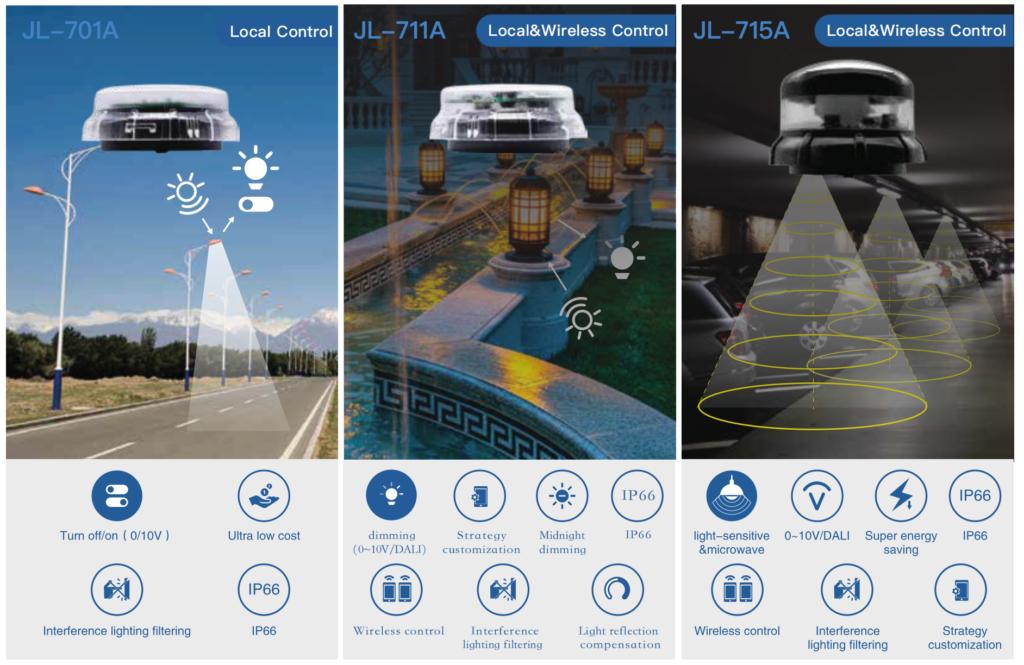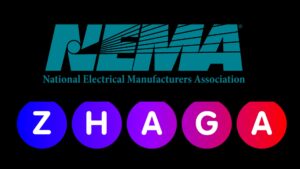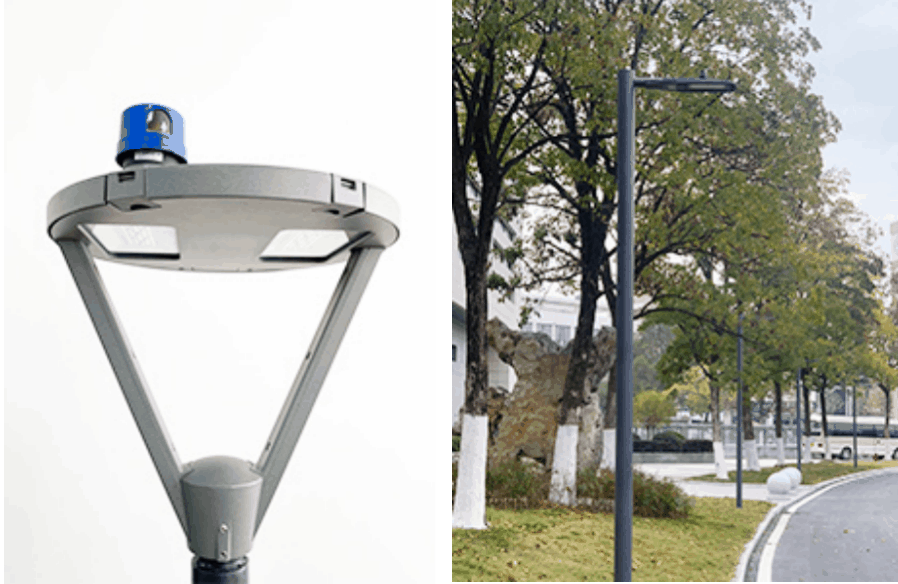Outline
- Introduction
- NEMA and Zhaga Standards
- NEMA Standards
- Zhaga Standards
- Benefits of Standardization
- Modular Upgrades: Achieving Flexibility in Lighting System Enhancements
- Flexibility in Deployment
- Modular and Future-Proof Systems
- Tailored Solutions Across Applications
- Case Studies: Real-World Implementations of Standardized Interfaces
- City of Los Angeles
- Schréder’s Smart City Projects Using Zhaga Standards
- Hybrid Use in Europe: NEMA and Zhaga Compatibility
- The Bottom Line
Owing to the rapid evolution of smart lighting systems, their standardization to ensure compatibility and seamless integration has become critical. Among these advancements, photosensor technology enables energy-efficient and adaptive lighting solutions. However, the lack of uniformity across designs often complicates interoperability and increases deployment costs.
To address this challenge, global standards like NEMA and Zhaga have emerged, offering a unified framework for photosensor interfaces. These standards streamline connectivity, enhance flexibility, and enable modular upgrades in lighting systems.
This article explores the role of NEMA and Zhaga standards in photosensor technology, highlighting their benefits, the modularity they offer, and their impact on deployment. Additionally, it delves into real-world examples of successful implementations.

NEMA and Zhaga Standards
The NEMA (National Electrical Manufacturers Association) and Zhaga interfaces represent key international standards in photosensor and lighting control technology, each designed to streamline integration and enhance functionality in lighting systems.
NEMA Standards
The NEMA interface, particularly the ANSI C136.41 standard, is widely used in North America and supports up to seven-pin configurations. These pins enable not only basic lighting control but also advanced functionalities like dimming, air quality monitoring, and traffic data collection.
NEMA photosensors are typically robust, capable of handling AC power directly from the grid, and compatible with various sensors. However, their larger size and reliance on AC/DC conversion can limit design flexibility and longevity.
Zhaga Standards
Zhaga, guided by Book 18 and aligned with the DALI D4i standard, has gained prominence in Europe and other regions focusing on compact, energy-efficient systems. Zhaga controllers operate on low-voltage DC power, eliminating the need for internal AC/DC conversion, which simplifies design and enhances reliability.
The standard emphasizes modularity and interoperability, allowing seamless upgrades and replacements. Its smaller size makes it aesthetically appealing for modern urban lighting.
Both standards cater to diverse market needs: NEMA offers extensive deployment in existing grids, while Zhaga provides a future-focused, scalable approach ideal for IoT and smart city applications. Their evolution underscores the importance of standardized interfaces in driving innovation and global adoption of advanced lighting systems.
Benefits of Standardization
Standardized interfaces in photosensor technology, such as those based on NEMA and Zhaga standards, significantly simplify connectivity in lighting systems. These interfaces ensure compatibility and interoperability between different manufacturers’ products, reducing the complexity of installation and integration.
For instance, the NEMA socket facilitates easy plug-and-play functionality for photosensors and lighting controllers, streamlining replacements and upgrades. Meanwhile, the Zhaga interface focuses on compact, low-voltage connections designed for the seamless integration of sensors and communication modules with LED luminaires, enhancing system versatility.
By adhering to these standards, lighting systems can achieve faster deployment and reduced maintenance costs. They also enable modular design approaches, allowing components to be replaced or upgraded without overhauling the entire system, thus promoting sustainability and efficiency.

Modular Upgrades: Achieving Flexibility in Lighting System Enhancements
Standardized interfaces, such as NEMA and Zhaga, enable modular upgrades that enhance flexibility in lighting systems. By adhering to these standards, manufacturers and end-users can easily replace or enhance individual components without overhauling entire systems.
For example, NEMA sockets support features like wireless communication and dimming controls, allowing seamless integration of advanced modules to upgrade streetlights for smart city applications.
Zhaga’s Book 18 standard takes this further by decoupling power supply and control functions, facilitating dual-node architectures. This design enables one node to serve as a communication hub and another as a sensor interface, simplifying upgrades while maintaining functionality. This modularity ensures future-proof systems are adaptable to evolving technologies.
These standards provide a scalable approach to integrating new capabilities, such as energy monitoring, advanced dimming, or enhanced sensing, ensuring lighting systems remain relevant in dynamic urban and industrial environments.
Flexibility in Deployment
Standardized interfaces, such as those defined by NEMA and Zhaga, greatly enhance flexibility in deploying lighting equipment across diverse environments. These standards ensure that components from different manufacturers can be seamlessly integrated, simplifying installation and reducing the complexity of system configurations.
For instance, Zhaga Book 18 supports plug-and-play functionality, allowing luminaires to be equipped with sensors or communication modules without additional adjustments. This compatibility facilitates the quick deployment of smart lighting solutions in outdoor spaces.
Similarly, NEMA standards, such as ANSI C136.41, enable easy interchangeability of photosensors and other devices on light poles, which is especially valuable for outdoor applications like street and area lighting.
Modular and Future-Proof Systems
The standardized nature of these interfaces supports a modular approach, enabling municipalities and organizations to adapt their lighting systems incrementally. For example, operators can install basic lighting initially and add smart controls later without replacing existing infrastructure.
This flexibility not only reduces upfront costs but also provides adaptability for future upgrades or technology changes.
Tailored Solutions Across Applications
By creating an ecosystem where components are interoperable, standardized interfaces allow lighting solutions to be tailored to specific applications, whether for urban streets, commercial spaces, or industrial environments while ensuring operational consistency.
Case Studies: Real-World Implementations of Standardized Interfaces

City of Los Angeles
Los Angeles deployed NEMA-compliant photosensors with ANSI C136.10 and C136.41 standards for its streetlight network, enabling seamless integration across multiple vendors.
These interfaces support energy-efficient dimming controls and automated fault detection, significantly reducing maintenance costs and energy usage. The upgrade allowed for a city-wide, interoperable lighting system adaptable to future innovations.
Schréder’s Smart City Projects Using Zhaga Standards
Schréder, a prominent lighting solution provider, adopted the Zhaga Book 18 standard for smart street lighting in various cities.
The standardized Zhaga-D4i interface facilitated plug-and-play integration of sensors and communication modules, allowing cities to retrofit existing luminaires without complete replacements. These systems enhance functionality with real-time monitoring and predictive maintenance, supporting smart city goals.
Hybrid Use in Europe: NEMA and Zhaga Compatibility
Several European municipalities combined NEMA and Zhaga standards to optimize interoperability and scalability in their lighting systems.
For instance, NEMA sockets were used for traditional luminaire housing, while Zhaga modules enabled advanced IoT applications. This hybrid approach balanced legacy infrastructure with cutting-edge technology
The Bottom Line
The adoption of NEMA and Zhaga standards in photosensor technology underscores the importance of interoperability and modularity in modern lighting systems. These standardized interfaces enable seamless integration, simplify deployment, and ensure scalability for future upgrades, making them essential for smart city infrastructure and beyond. For reliable, high-quality NEMA and Zhaga-standardized photosensors, Chi-Swear stands out as a trusted supplier.
External Links
- https://www.nema.org/
- https://zhagastandard.org/
- https://www.nema.org/standards/technical/ansi-c136-series-standards-for-roadway-and-area-lighting-equipment
- https://www.dali-alliance.org/d4i/
- https://www.zhagastandard.org/?view=article&id=64:book-18&catid=10
- https://lalights.lacity.org/connected-infrastructure/led_program.html







One Response
you are in reality a good webmaster. The website loading velocity is amazing. It sort of feels that you’re doing any distinctive trick. Also, The contents are masterwork. you have done a fantastic job in this topic!